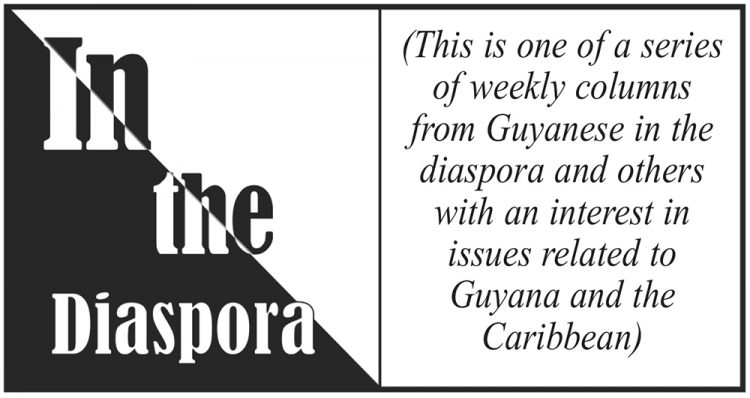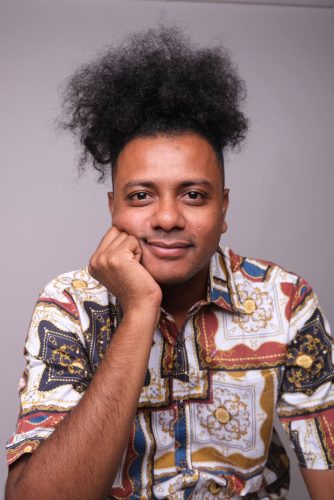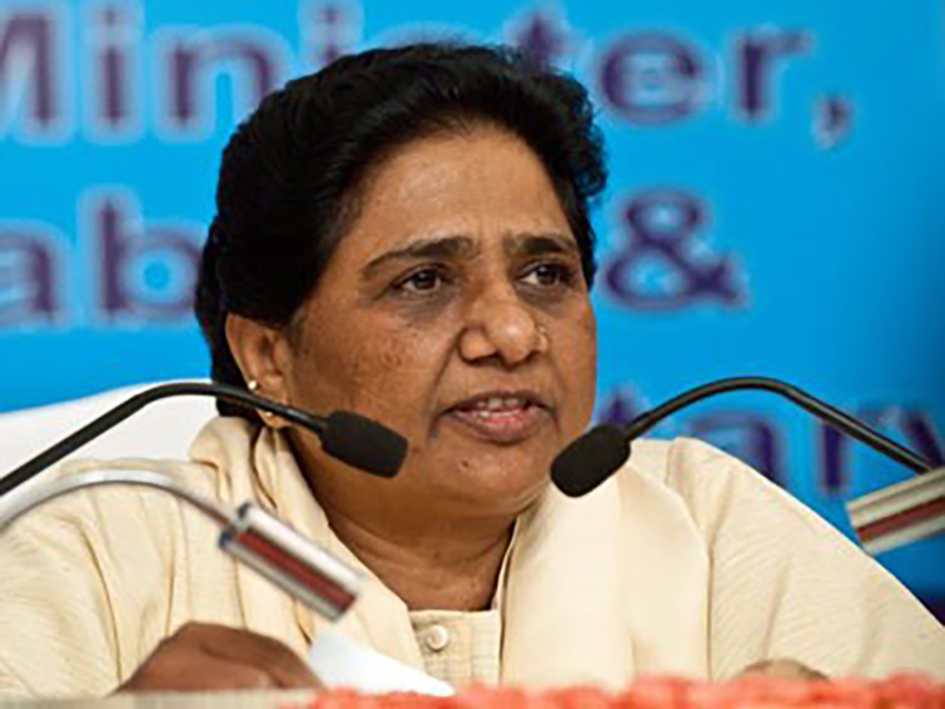By Suraj Yengde
 Suraj Yengde, who earned his PhD from the Faculty of Humanities at the University of the Witwatersrand, Johannesburg, is currently reading for a second doctoral degree in the Faculty of History at Oxford University. He is the author of the bestseller, Caste Matters (2019) and co-editor of the award-winning anthology with Dr. Anand Teltumbde, The Radical in Ambedkar: Critical Reflections (2018). He is a columnist at the Indian Express, running ‘Dalitality,’ currently the only column in print media to have Dalit-centric opinions. Dr. Yengde is a founder and curator of Dalit Film Festival and co-founder of Equity in Policy Education initiative started at Harvard. He is an international human rights attorney by qualification from India and the UK and is a member of the Lancet Commission on Racism, Structural Discrimination and Global Health.
Suraj Yengde, who earned his PhD from the Faculty of Humanities at the University of the Witwatersrand, Johannesburg, is currently reading for a second doctoral degree in the Faculty of History at Oxford University. He is the author of the bestseller, Caste Matters (2019) and co-editor of the award-winning anthology with Dr. Anand Teltumbde, The Radical in Ambedkar: Critical Reflections (2018). He is a columnist at the Indian Express, running ‘Dalitality,’ currently the only column in print media to have Dalit-centric opinions. Dr. Yengde is a founder and curator of Dalit Film Festival and co-founder of Equity in Policy Education initiative started at Harvard. He is an international human rights attorney by qualification from India and the UK and is a member of the Lancet Commission on Racism, Structural Discrimination and Global Health.

The world’s largest democracy, India is undergoing elections. Nearly 969 million voters are eligible to vote in the 18th round of General Elections, lasting over seven phases and 42 days.
Democracy in India has relied on state institutions such as the judiciary and bureaucracy to allow citizens to have a say in the seat of power. As happened with many African and Asian nations, the democratic promise was hijacked by the ruling castes, classes and dominant tribes and ethnicities. In a complex and diverse country like India, the promise of true democracy seemed a long call. But it has appeared to have succeeded with a couple of hiccups along the way.
Though democracy is lauded, it is not always practiced in complete transparency. Given the casteist nature of feudalism strongly in force, the democratic experiment is littered with feudal strong men and regional satraps who channel their illegal power through a processual democracy. The landlord with his whipcord and henchmen tormenting the peasants on the field now adorn a white kurta and pyjama with folded hands for votes. They ironically use state institutions to advance class agendas that benefit a narrow and deeply entrenched caste elite, and further muscle down on any protests.
The change of a ruling class which now begs for votes has altered the power dynamics, and though not largely significant in changing the order of the society, has given the right of dignity and status to the poor, outcaste worker. The champion of democracy in India is Dr. B. R. Ambedkar, a Columbia and London School of Economics double doctorate holder and the framer of India’s Constitution who breathed a life of progress and modernity in the otherwise Brahmin-run India.
Under the feudal relations of caste, the ruling class of India, the Brahminical elites, took on the cudgels of power and chose to represent India. This happened under the mandate of democracy and franchise. The many micro-numbered, minority outcastes were not a force that the ruling class had to directly account for, though they sought their votes. Thus, despite a reservation policy that forces each political party to have a Dalit or Tribal representation, the tokens were asked to be pen holders.
This went on till about the 1970s. Then came a man after Dr. Ambedkar, who was a champion of the marginalised in the North Indian state of Uttar Pradesh. Democracy in India is meant to give power and crown to those whose position has been relegated to a mere number and without quality of life and dignity. Kanshi Ram (1934-2006) formed a nexus of diverse caste groups, and united them in a uniform political identity. They shot to fame in the 1990s, representing the Bahujans – backward classes, Dalits, Tribal, converted minorities who accounted for more than 85% of India’s population. Kanshi Ram launched the Bahujan Samaj Party (BSP), claiming to have a true representation and participation, rather than tokenism. His book, Chamcha Age, talked of stooges from the oppressed castes who were used by the dominant Hindu caste parties for their advantage.
Apart from the hegemonic apparatuses of the Brahminical Indian National Congress (INC) and Bharatiya Janta Party (BJP), India’s regular, oppressed voters truly felt represented in BSP. They voted in numbers and created a potentially harmonious congregation of India’s diversity bringing castes, religions and regional dynamics. The BSP went on to become the third-largest party and it continued to hold that position from the 2000s till 2019. In the last parliamentary elections, they were fourth in matters of vote share, pulling over 22 million votes.
The BSP party is perhaps the world’s most iconic and radical experiment in the exercise of claiming power through electoral means and without the rhetoric of a violent revolutionary philosophy. The present leader of this party is an even more credible leader, who hails from the Dalit community who rose through the ranks of a party cadre in her early 20s joining the movement in 1977 to rule India’s largest state, Uttar Pradesh.
The majority of the Indo-Caribbean diaspora can claim their ancestry to this region. Even more so, many in the diaspora can possibly claim to belong to her caste community, though the diaspora also reflects the diversity of Indian origins, including Muslims, Biharis, tribals, South Indians, and others. She is a chamar, the “insulting” word that was given up by chamars who came in huge numbers as indentured labour to work on the Caribbean plantations. Many untouchable communities from the region filled the ranks of ships as they descended into a new land. The majority lower castes started to loosen the grips of caste over the years, but institutional caste remnants have remained. Temples and other Hindu organizations continued to defend caste norms as a justifiable Vedic practice without knowing the intensity of such an institution. However, among the majority of the indentures, being from the non-Brahmin community, there did not arise a project to revive caste as in India.
The leader of democracy
Mayawati continues to be largely ignored because her politics doesn’t align with Brahminical agendas. Her tenure as the head of the state is considered as the safest times in Uttar Pradesh. She introduced land reforms; worked to stop feudal violence; invested in infrastructure projects (eg. investing in expressways connecting Delhi with Uttar Pradesh); established educational institutions; and introduced a power supply project to avoid electricity cuts. She erected monuments in parks to honour the Dalit and backward class leaders whose public display was never considered by either the BJP or Congress. Her investment in education and distribution of village lands for the oppressed have been some noteworthy accomplishments.
The ruling castes of India have a deep-seated hatred and patronizing vulgarity towards Dalits and their claims to power. This did not however stop the tide of democracy from giving power to a Dalit woman. The grouse of her being in the top position, ruling with charisma and order, did not encourage commentators, pandits, and media to celebrate her iconic rise. Supposedly progressive political forces from India are largely in cahoots with the ruling castes as they come from the same heritage. Indeed, the Right and Left agenda sit within the same family and castes who fought it as showbiz for the world to not pay attention to Dalit agency.
Feminist icons of the academy and celebrity culture in the West who wrote tomes on feminism did not even register the existence of Mayawati. Still, she kept on marking her achievements like a historical actor born once in an epoch. Mayawati rose from the ground, battling the powers at the top. She did not receive solidarity or recognition for her groundbreaking work. For these children of bastardized ideologies who occupied positions in academic departments and white-collar occupations, Mayawati became an unwelcome damnation. They couldn’t recognize her presence let alone celebrate the rise of the subalterns.
Meanwhile, Mayawati was politically targeted. She was wrongly held for corruption charges which remained unproved. The Supreme Court acquitted her of all charges, yet that singularity of a corrupt Dalit woman entertained the minds of oppressor caste men and women. Recently, the largest political corruption scandal of Electoral Bonds in India had all the major parties being named. The only party that was not on the corruption list for taking laundered money was the BSP. Mayawati has maintained the principles of following the Constitution drafted by Dr. Ambedkar, and becoming part of the order rather than destroying it. She rebelled but through democratic liberal principles, and fought power brokers who wanted to destroy the existence of Dalit women’s agency.
Mayawati’s rise to power has not been simple, and has included difficult company. Being the party’s leader, she has made harsh decisions on her party cadres, often firing them permanently from the party. This impetuousness has cost her veteran cadres and crowd-pullers who had devoted their life to the mission. This behaviour is continually critiqued, while the defenders justify it as a matter of party discipline, and as no different from other establishments. Old timers hurry to compare the BSP under Mayawati with Kanshi Ram. Yet, she has managed to stay in the position of running the affairs of the party and mission.
Mayawati is arguably a towering woman icon of our era. She is a hero for women, working-class organizations, unions, and other underrepresented constituencies of North India/Uttar Pradesh. Her story is emotional, and can bring joy and give courage to those whose existence is doubted and politics penalized. Mayawati’s political career can teach us how to make alliances, be part of the longer-term solution, develop maturity and discard negativity because the cause is bigger than a person. Mayawati gave a different option for those who were previously convinced about the BJP or Congress.
Mayawati has survived caste, gender, class, and regional hatred. Her life story is a remarkable destiny of poetry and solitude. She remained single, and chose to commit her life to protecting vulnerable chattels, peasants, workers, and oppressed castes. She continues to serve her cause as her rallies fill with peasants and daily wagers who have foregone their day’s earnings to assure their leader about their support. These same people saw their life improved in villages, and their children receiving quality education. For the urban poor she established housing projects and social welfare schemes. The profile of Mayawati’s rallies demonstrate the work done in her state and beyond. Her party has a national base and she is a crowd puller across India.
It is to Mayawati that the world should be looking, and analyzing what her politics means for Indian democracy and the internationalist order. Indo-Caribbean peoples could uphold Mayawati as someone who represents their history and ancestry. She is from the same cloth that the indentured folks were cut from. Her iconography, political courage and acumen could inform the political visions of Caribbean peoples of all colours and backgrounds.

